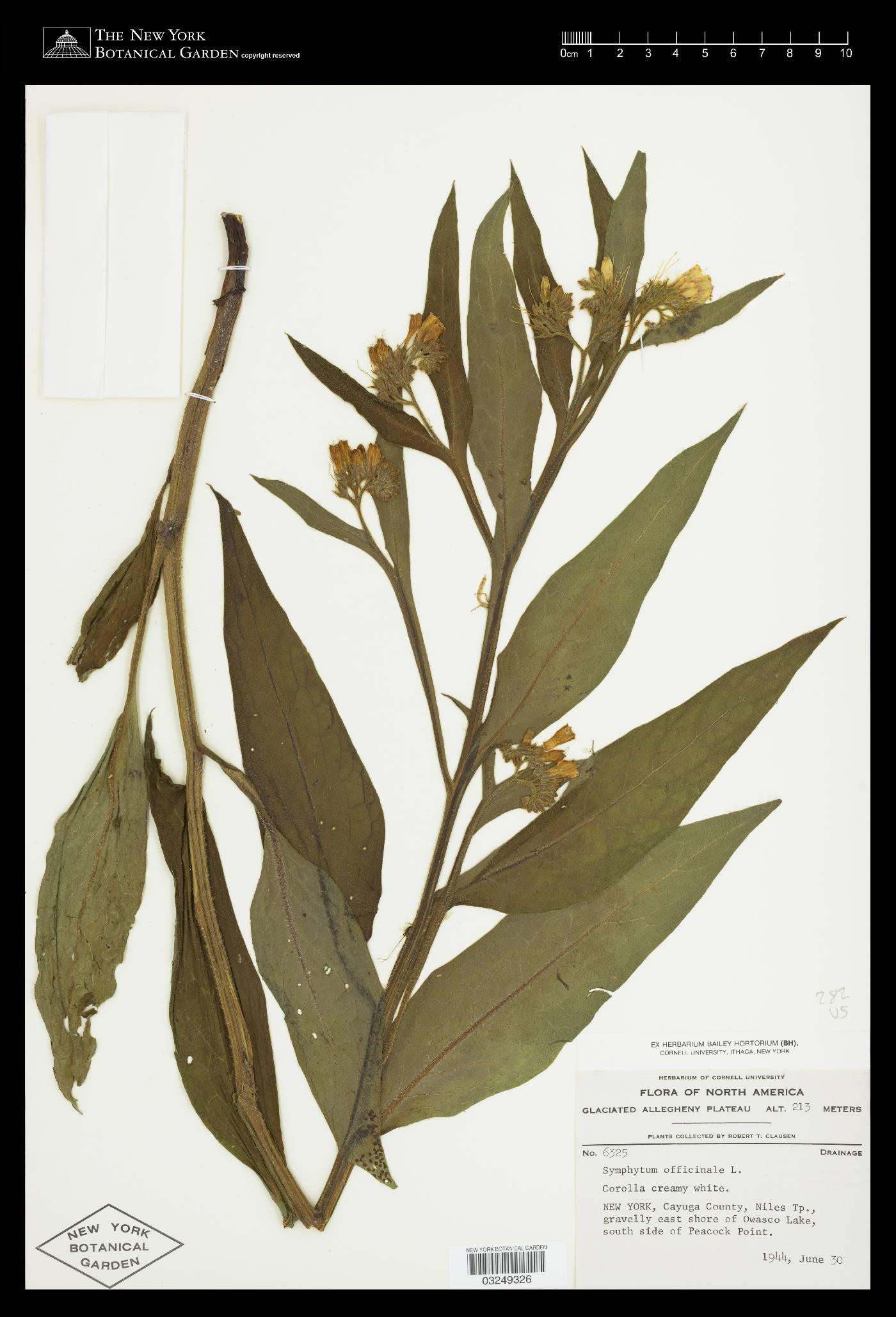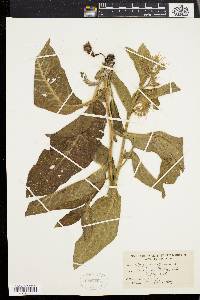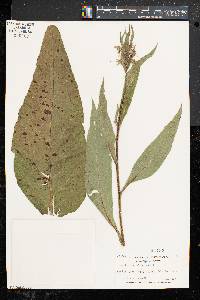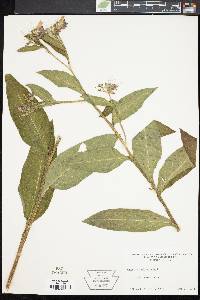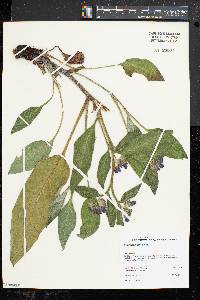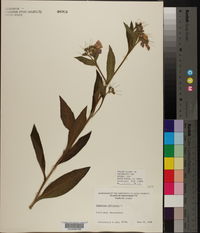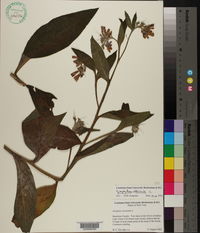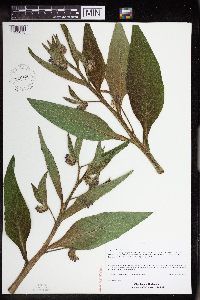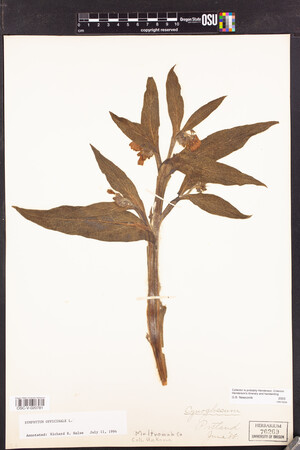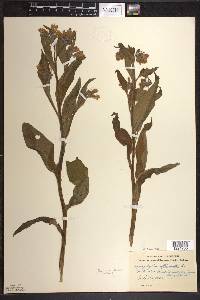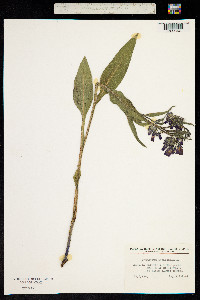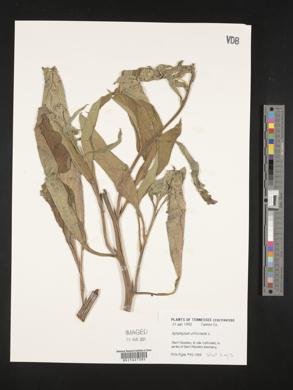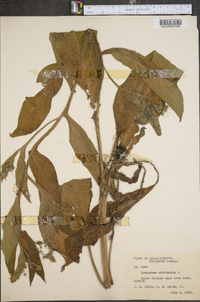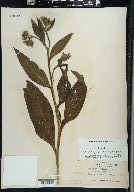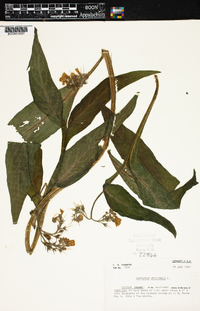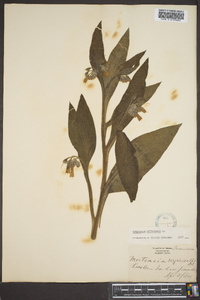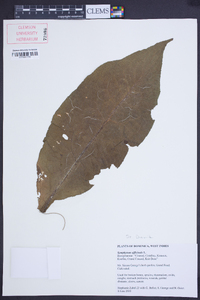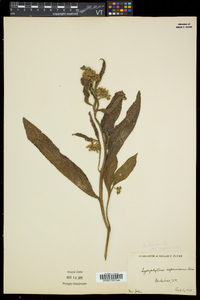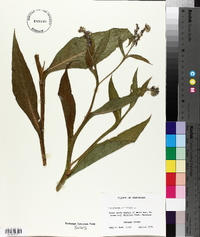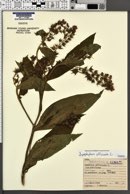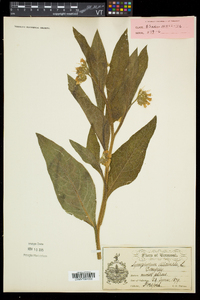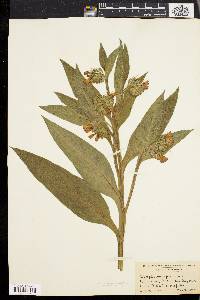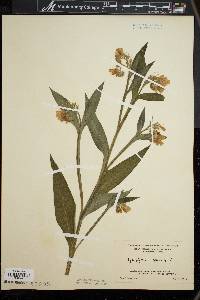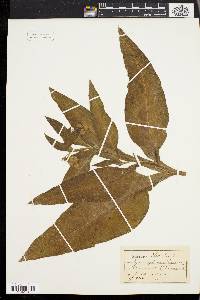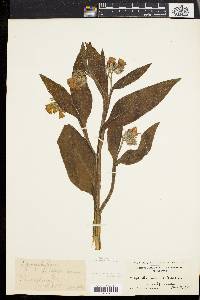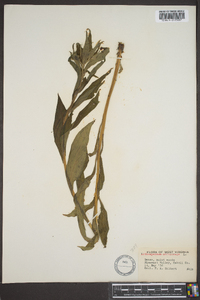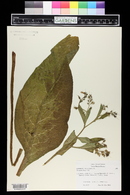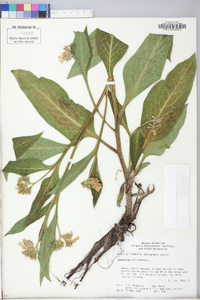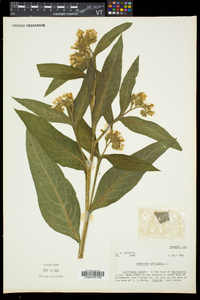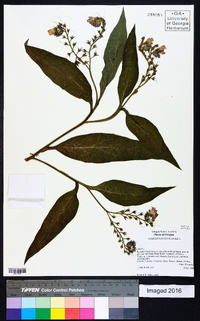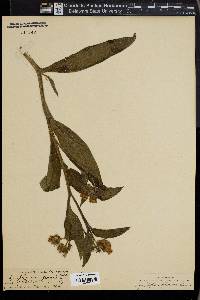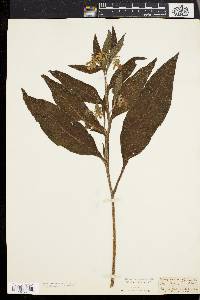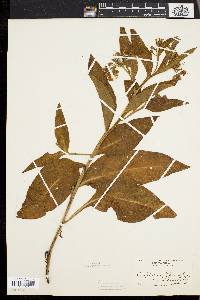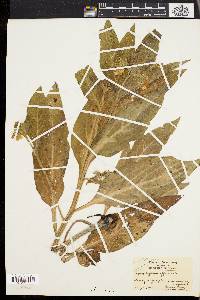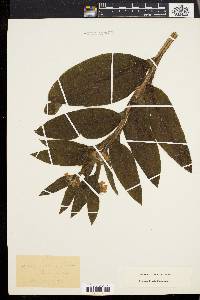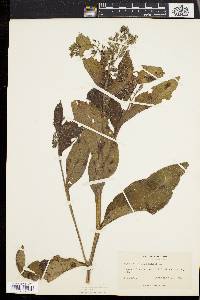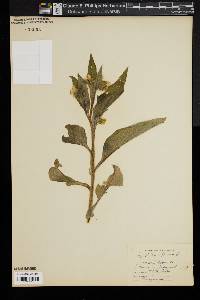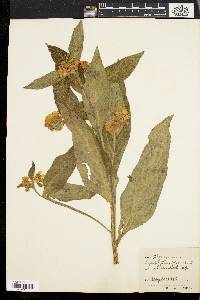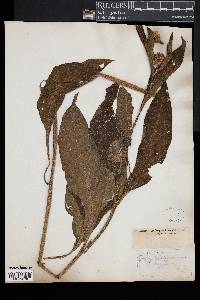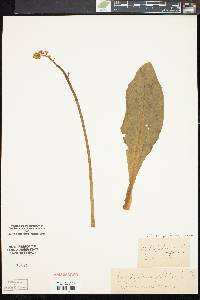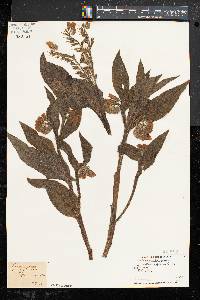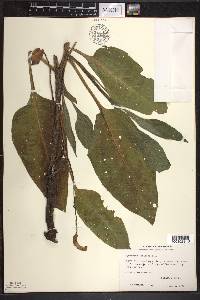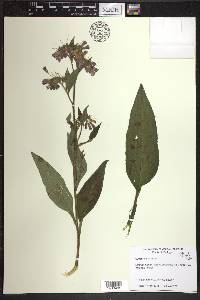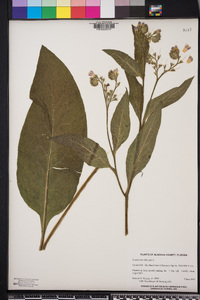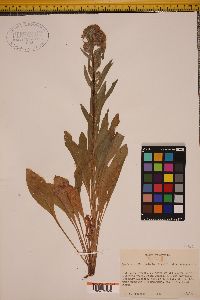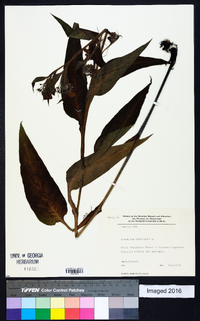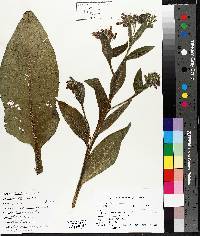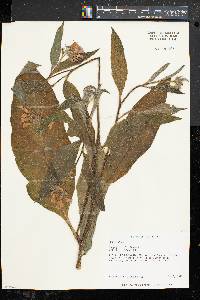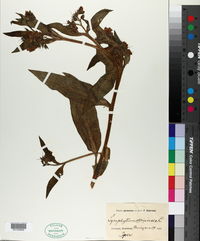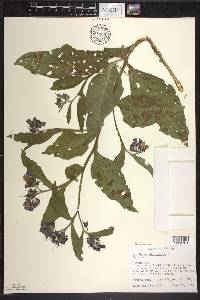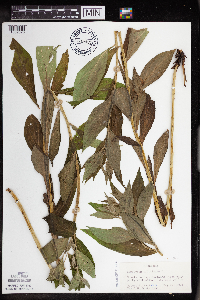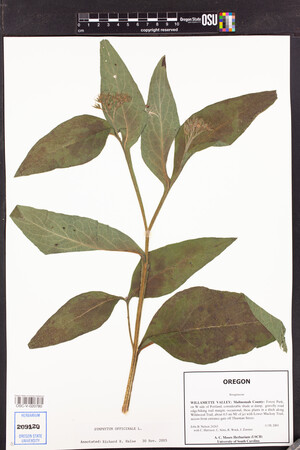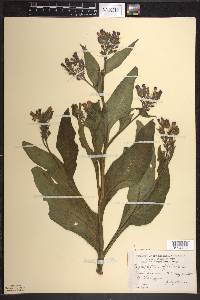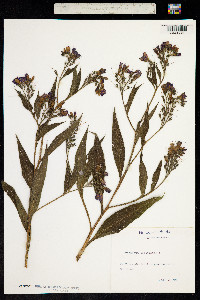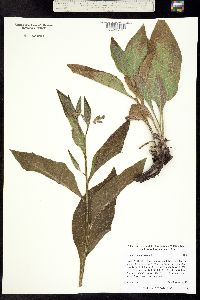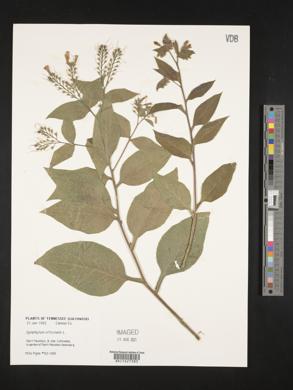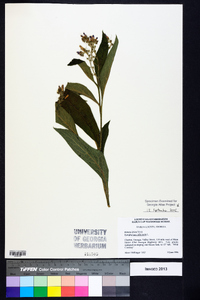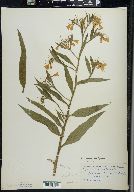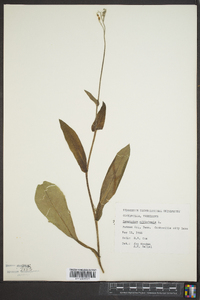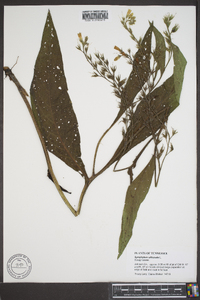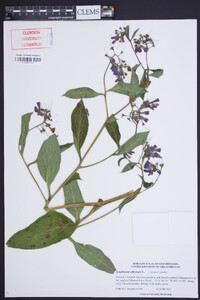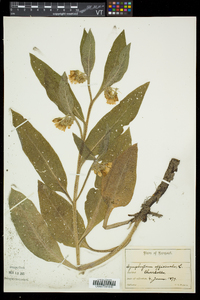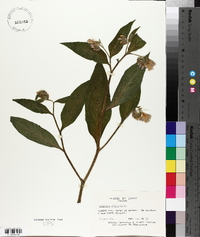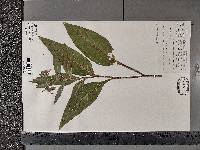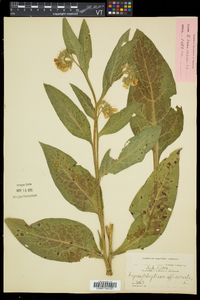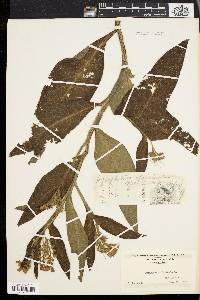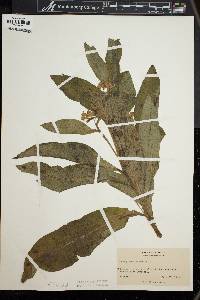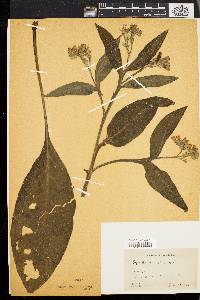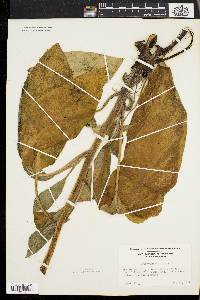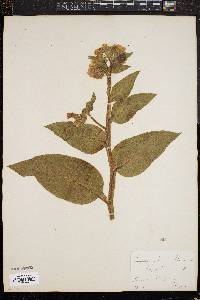
|
|
|
|
Family: Boraginaceae
Common Comfrey
[Symphytum officinale subsp. uliginosum, moreSymphytum officinale var. officinale L., Symphytum officinale var. purpureum Pers., Symphytum peregrinum , Symphytum uliginosum Kern.] |
Perennial herb 30 cm - 1.3 m tall Stem: stout, branching, densely covered with spreading, straight or recurved hairs, and winged lengthwise due to tissue of upper leaves continuing down the stem (decurrent). Leaves: alternate, spreading-hairy, non-toothed, of two kinds: basal and lower leaves stalked, large (15 - 30 cm long, 7 - 12 cm wide), and mostly egg-shaped; upper leaves smaller, more narrow, and stalkless with leaf tissue continuing down the stem as wings (decurrent). Inflorescence: of several to many, often paired, nodding, stout, short, spreading-hairy, modified spike-like branches near top of stem in upper leaf axils, with individual flowers stalked. Flowers: creamy yellow, pale pink, or pale blue, 1.2 - 1.8 cm tall, radially symmetric, narrowly bell-shaped with long, cylindric petal tube, and very short, slightly outward curved, tooth-like lobes. Sepals: spreading-hairy, five, but fused at base (under half the total length), then separating into 5 - 9 mm long, somewhat lance-shaped, obviously pointed lobes. Petals: five, but fused into a long cylindric tube for most of their length, then separating into five, tooth-like lobes which are much shorter than the tube portion. Stamens: five, filaments about as wide as anthers, very short, attached to top inside of petal tube, but anthers never extended beyond petal tube. Pistil: with one, four-lobed, two-chambered, superior ovary; and a single, slender, threadlike style with a single stigma. The style and stigma are just longer than the petal tube. Fruit: a cluster of four, black, smooth, shining, approximately 5 - 6 mm tall, somewhat egg-shaped, incurved nutlets with a lengthwise ridge on the inner side, and a prominent toothed basal rim surrounding a short, stalk-like, basal appendage. The basal stalk-like structure of each nutlet fits into a central pit of the otherwise flattish base of the remnant flower, thereby holding the nutlets at a slight upward angle with the tips pointing toward the center. Root: a thickened taproot, secreting a sticky, bitter, gelatinous substance (mucilage). Similar species: Symphytum officinale is very similar to S. asperum, except that species has very spiny, flattened, broad-based hairs along the stem and inflorescence; the leaves rarely have basal tissue that continues down the stem (stem not winged); and the nutlets are noticeably wrinkled and rough. This species may be confused with Anchusa officinalis, however, that species has more narrow leaves, and deeper blue flowers that have narrower petal tubes with obvious, larger, separate, somewhat flaring, more round-tipped lobes. Flowering: May to September Habitat and ecology: An occasional escape from cultivation, often found along railroads. Occurence in the Chicago region: non-native Notes: A native of Eurasia, this species is often grown as an ornamental or medicinal herb. Author: The Field Museum Taprooted perennial 3-12 dm; stem and infl hispid-hirsute with spreading or recurved, subterete hairs; lvs large, the basal petiolate, with ovate or lance-ovate blade 15-30 n7-12 cm, the cauline gradually reduced but still ample, the upper commonly sessile; stem evidently winged by the conspicuous decurrent lf-bases; cal 5-7 mm, cleft to below the middle; cor ochroleucous or dull blue, 12-18 mm; filaments as wide as the anthers; connective projecting beyond the thecae; nutlets 5-6 mm, black, very smooth, shining; 2n=24-54. Native of Eurasia, escaped or adventive in waste places here and there in our range. June-Aug. Gleason, Henry A. & Cronquist, Arthur J. 1991. Manual of vascular plants of northeastern United States and adjacent Canada. lxxv + 910 pp. ©The New York Botanical Garden. All rights reserved. Used by permission. |

